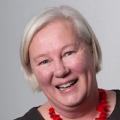Twenty years ago a woman from Caerleon, one of the last links between South Wales and the Spanish Civil War, died. Here we revisit her fascinating story as told in 2001 by then Argus writer Mike Buckingham.
MARIA Fernandez, who sheltered young Basque refugees during the bitter Spanish Civil War of 1936-1939, has died peacefully in Gwent at the age of 97.
The daughter of an ironworker from Bilbao who came to Dowlais at the turn of the last century, Mrs Fernandez had lived at Caerleon only yards from the site of Cambria House, where the young refugees from Franco's bombs were housed.
Mrs Fernandez' death severs one of the last links between South Wales and the Spanish Civil War, a conflict which saw many men from the mining villages make their way to Spain to fight for the Republican government against Franco's insurgents.

Basque children at Cambria House in Caerleon. "They are already trying to play rugby" the Argus told us
As the war grew in bitterness and intensity the Francoist side made use of German and Italian air power to bomb Basque towns. The most notorious of these incidents was the bombing of Guernica, later to be immortalised in a painting by Picasso.
As the war progressed, a steady trickle of boys and girls were shipped from Spain to Cambria House, then owned by Monmouthshire County Council, and placed under Mrs Fernandez' wing.
In an interview several years ago, Mrs Fernandez - a Spanish speaker born in the Basque region - looked back on those years as being the most challenging of her long life.
"I was furious when Franco's forces marched in to overthrow the government of Spain," she said.

Hundreds of Basque children onboard the Habana being evacuated from Bilbao sailing for Britain
"I was not attached to any Spanish political party - I did what I did because I had a great dislike of Franco."
Basques migrated to Monmouthshire after British iron and steel works began advertising in Spain after the Boer War. Mrs Fernandez' father was part of that movement of workers.
MORE NEWS:
- Newport cocaine dealing couple who made £40k back in court
- Rich list Wales: Newport's Terry Matthews third richest man
- New Inn pupil sets up club to support military children
For several decades the Basques busied themselves in the steel mills and foundries and with the task of integrating themselves in Wales' social structure - at the same time striving to keep the bright fire of their cultural identity burning.
"The Basques are like the Welsh in that they are proud of their ancient language," Mrs Fernandez said.
"The Basque language is as different from Spanish as Welsh is from English. Basques have always been fighting for their independence and there was great horror when Franco flew in from North Africa at the head of Moorish troops to overthrow the legitimate government.
"Some people at Cardiff University were sympathetic to the Spanish government, as were most of the population of South Wales. The university people wanted to do something to help and a home for refugees was suggested.

The front page of the Argus on May 24 1937 which told how Basque refugee children were traumatised.
"It was all supported by charity, often by people who in the years before the last war had little enough themselves. Not a penny of government money went into it.
"I remember that Conservatives as well as Labour, Liberal and Communist supporters all helped out.
"At this time my husband Manuel was a seafarer and was often away from home. When I heard about Cambria House I offered my services.
"The lady who had been in charge before was strict and did not like the Basque children to mix with locals.
"The children were not allowed to do this and not allowed to do that - and I well remember one little boy putting up his hand and saying: 'Please, Senora, may we breathe?'

Basque child refugees board the Habana in Bilbao
"I encouraged the Basque children and locals to play together. There were the usual problems with stealing apples and that sort of thing - but the Basque children were told to be good ambassadors for their homeland and were generally well-behaved."
Only months after the defeat of the Spanish government forces and the imposition of Franco's dictatorship, which was to last another 30 years, Britain was at war with Germany and the young residents of Cambria House had to move to make billeting space for British troops.
Most found work, or were adopted, and are still scattered across South Wales. Almost all of the Basque boys and girls kept in touch with the Spanish woman they came to see almost as a mother.

Basque child refugees arrive at Newport station in July 1937
At Christmas her mantlepiece was covered with from her 'family', many of whom went on to distinguish themselves in Welsh life.
Long after she retired to Camelot Court, she would say: "Why did I do it? It is simple - I believed in the Spanish republic and I have always loved the people."
Mrs Fernandez died at the Royal Gwent Hospital on January 26, 2001 - surrounded by her family.








Comments: Our rules
We want our comments to be a lively and valuable part of our community - a place where readers can debate and engage with the most important local issues. The ability to comment on our stories is a privilege, not a right, however, and that privilege may be withdrawn if it is abused or misused.
Please report any comments that break our rules.
Read the rules hereLast Updated:
Report this comment Cancel